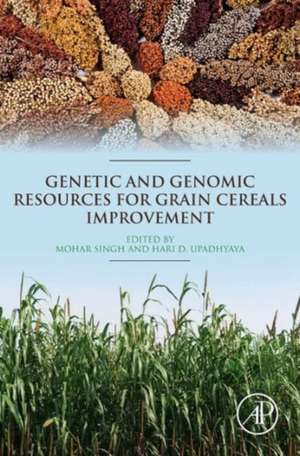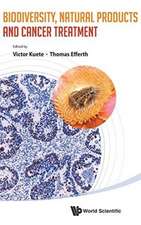Genetic and Genomic Resources for Grain Cereals Improvement
Autor Mohar Singh, Hari D. Upadhyayaen Limba Engleză Hardback – 27 noi 2015
As grain cereals, including rice, wheat, maize, barley, sorghum, and millets constitute the bulk of global diets, both of vegetarian and non-vegetarian, there is a greater need for further genetic improvement, breeding, and plant genetic resources to secure the future food supply.
This book is an invaluable resource for researchers, crop biologists, and students working with crop development and the changes in environmental climate that have had significant impact on crop production. It includes the latest information on tactics that ensure that environmentally robust genes and crops resilient to climate change are identified and preserved.
- Provides a single-volume resource on the global research work on grain cereals genetics and genomics
- Presents information for effectively managing and utilizing the genetic resources of this core food supply source
- Includes coverage of rice, wheat, maize, barley, sorghum, and pearl, finger and foxtail millets
Preț: 575.00 lei
Preț vechi: 746.66 lei
-23% Nou
Puncte Express: 863
Preț estimativ în valută:
110.02€ • 115.18$ • 91.04£
110.02€ • 115.18$ • 91.04£
Carte tipărită la comandă
Livrare economică 29 martie-12 aprilie
Preluare comenzi: 021 569.72.76
Specificații
ISBN-13: 9780128020005
ISBN-10: 0128020008
Pagini: 384
Dimensiuni: 152 x 229 x 23 mm
Greutate: 0.86 kg
Editura: ELSEVIER SCIENCE
ISBN-10: 0128020008
Pagini: 384
Dimensiuni: 152 x 229 x 23 mm
Greutate: 0.86 kg
Editura: ELSEVIER SCIENCE
Public țintă
Cereal crop breeders, PGR researchers and crop biologists, advanced studentsCuprins
- Summary
- Introduction
- Origin, distribution and diversity including taxonomy/biosystematics
- Erosion of genetic diversity from the traditional areas
- Status of germplasm resources conservation (ex-situ/in-situ on farm)
- Germplasm evaluation and maintenance
- Use of germplasm in crop improvement
- Limitations in germplasm use
- Germplasm enhancement through wide crosses
- Integration of genomic and genetic resources in crop improvement
- Conclusions
- References












